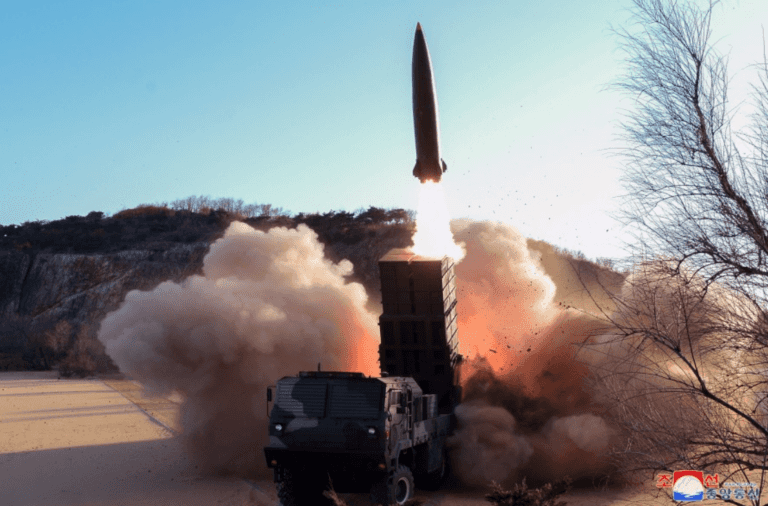
North Korea launched a projectile using ballistic missile technology from the northwest of the country toward the south at around 3:51 a.m. Thursday, the Japanese government has announced. The projectile separated into several parts and fell into three areas outside of Japan’s exclusive economic zone. One part is believed to have passed through the airspace between the main island of Okinawa and Miyakojima island in Okinawa Prefecture. North Korea said the Thursday launch was a failed attempt to send up a military reconnaissance satellite, and that it will make a third try in October. Pyongyang failed in its first launch attempt on May 31 and had informed Tokyo it would attempt another launch sometime between Thursday and Aug. 31. The parts of the projectile fell into areas that were outside where North Korea had predicted. Immediately after the latest launch, the Japanese government issued an emergency warning to Okinawa Prefecture through the J-Alert system. No damage has been confirmed in Japan.
Having judged that the projectile was unlikely to fall on Japanese territory, the Self-Defense Forces took no measures to intercept it. Prime Minister Fumio Kishida told reporters at the Prime Minister’s Office in Tokyo on Thursday that the launch was a “failure.” According to the Defense Ministry, the projectile was launched from the Tongchang-ri district and separated into multiple pieces in stages. The first fallen object dropped into the Yellow Sea about 300 kilometers west of the Korean Peninsula at around 3:58 a.m., and the second into the East China Sea about 350 kilometers southwest of the peninsula at around 3:59 a.m. The third apparently passed through the airspace between the main island of Okinawa and Miyakojima island at around 4 a.m., and fell into the Pacific Ocean about 600 kilometers east of the Philippines at around 4:05 a.m. According to the official Korean Central News Agency, the projectile was the new-type satellite carrier rocket Chollima-1, loaded with the military reconnaissance satellite Malligyong-1.
The first and second stages of the Chollima-1’s flight progressed normally, but the emergency detonation system is believed to have malfunctioned during the third stage. This is the seventh time since August 1998 that North Korea has launched what it calls a “satellite.” The Japanese government held a meeting of the National Security Council of four ministers to discuss future measures. Since ballistic missile technology is used for rockets carrying a satellite, Kishida stressed to reporters that the launch “violates U.N. Security Council resolutions.” The Japanese government lodged a stern protest with North Korea via its embassy in Beijing. On Thursday, South Korean President Yoon Suk Yeol instructed senior officials of the South Korean presidential office and others to share findings from the analysis of the launch with Japan and the United States to prepare for any additional provocations by North Korea. The foreign ministers of Japan, the United States and South Korea agreed in telephone talks Thursday to coordinate and work closely on the issue. Pyongyang apparently aims to acquire, through the launch of a satellite, the ability to better monitor U.S. and South Korean forces in South Korea.
___
(c) 2023 the Asia News Network
Distributed by Tribune Content Agency, LLC.
0 comments :
Post a Comment